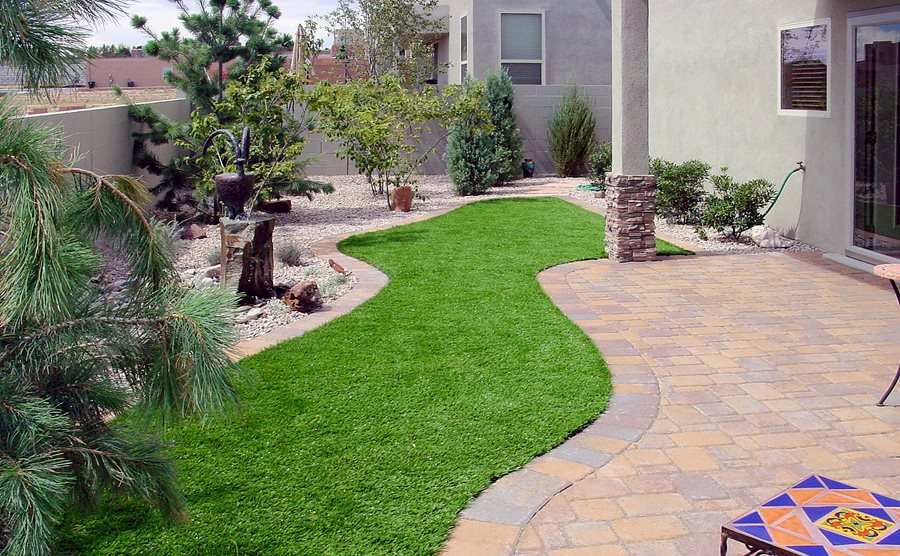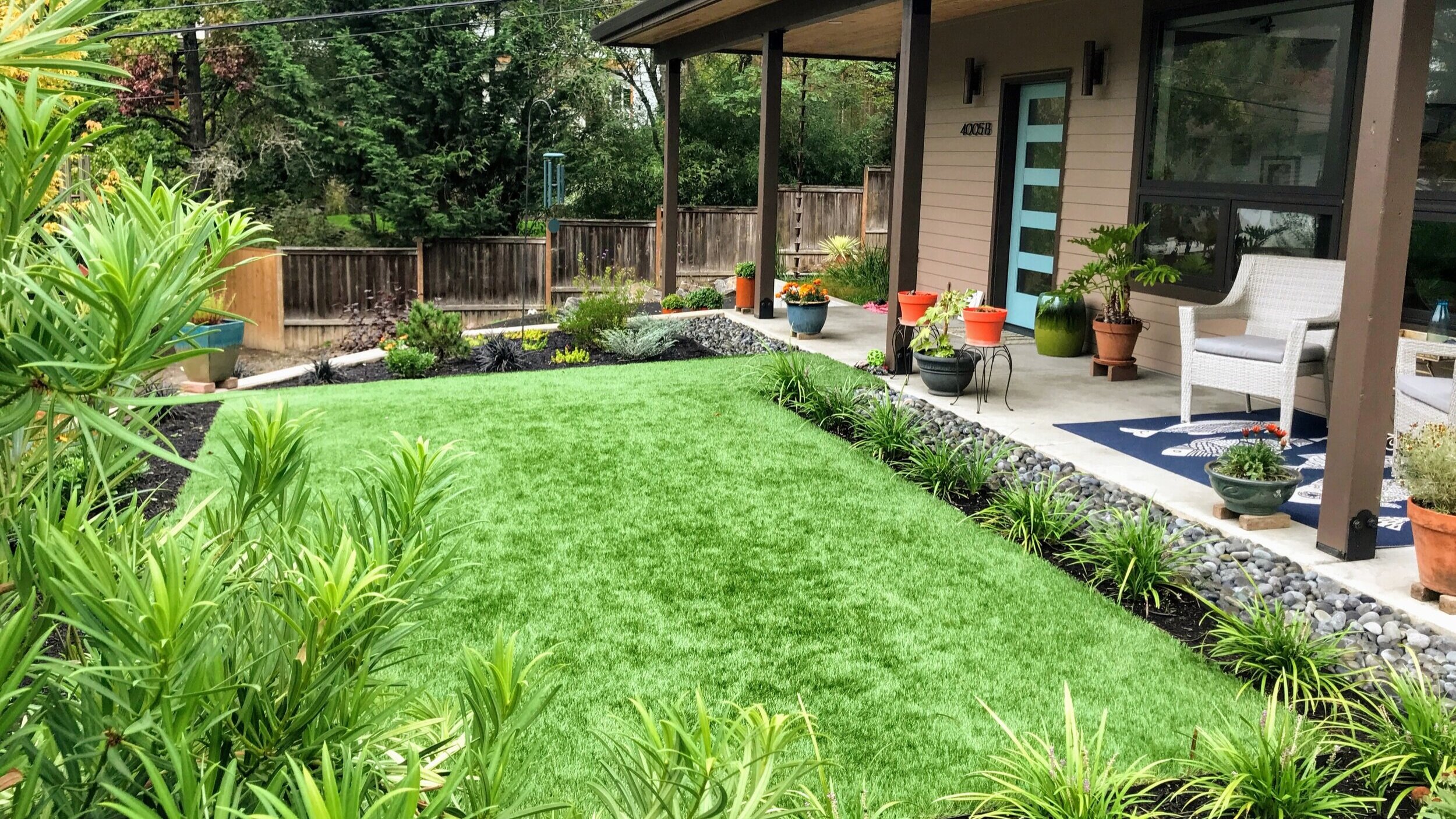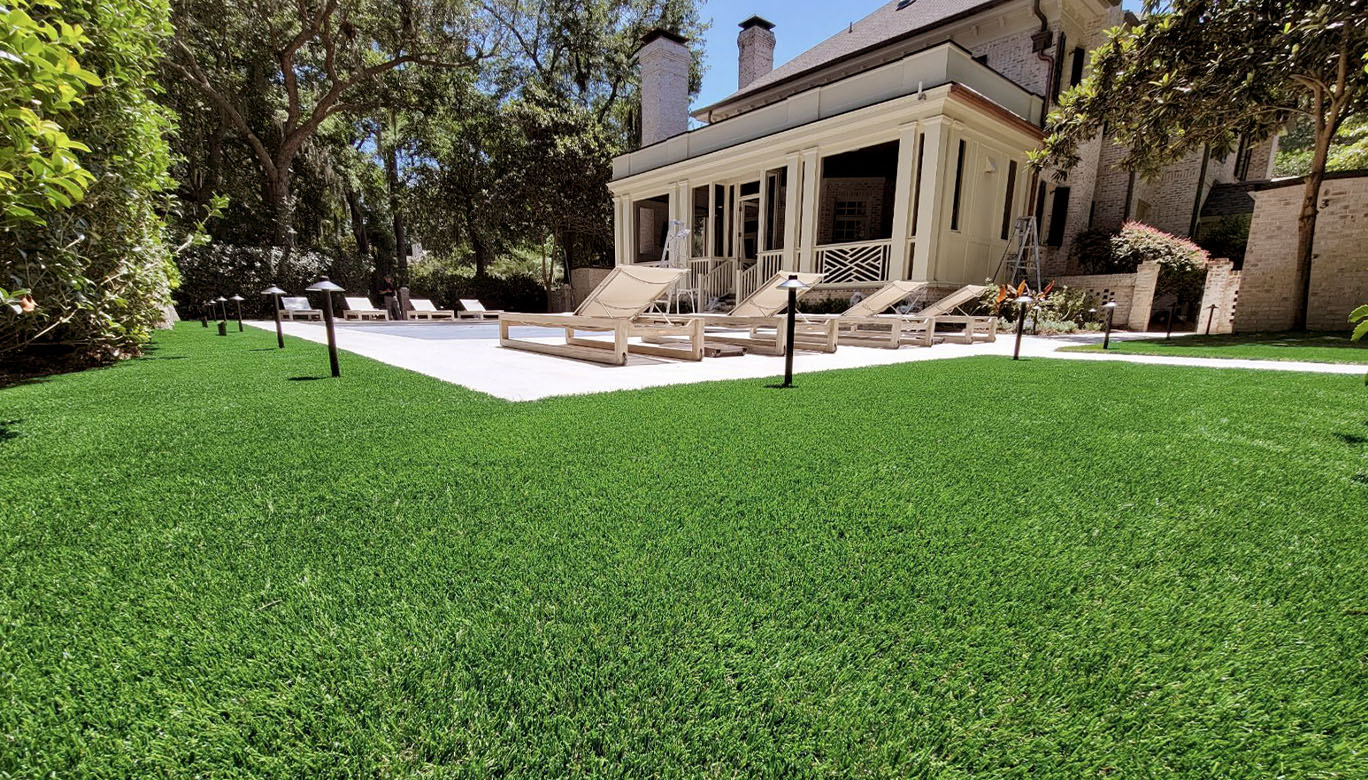Durable Arizona Artificial Turf for Home and Commercial Applications
See Why Homeowners Prefer Artificial Grass for Lasting Landscaping Practices
As home owners progressively focus on sustainability in landscape design, artificial turf has arised as an engaging alternative to typical grass. Its capacity to conserve water, decrease upkeep efforts, and lessen ecological impact positions it as a sensible selection for those looking for green solutions. Furthermore, the aesthetic allure and versatility of synthetic grass accommodate diverse design choices. Nevertheless, the implications of this change expand past plain comfort and aesthetics, prompting a closer examination of how these options influence more comprehensive ecological outcomes. What stays to be discovered is the complete range of advantages that synthetic grass can provide to property owners and the environment alike.
Water Conservation Perks
Among the most substantial advantages of synthetic grass is its function in water preservation. Traditional lawn yards require substantial amounts of water to maintain their rich look, frequently causing overuse of local water resources, particularly in dry areas. In comparison, artificial turf eliminates this need completely, as it does not call for watering. This not just conserves water but likewise minimizes the pressure on community water systems, especially throughout dry spell problems.
Additionally, the installation of synthetic grass can add to a much more lasting landscape. Property owners can considerably decrease their water bills, permitting reallocation of resources to other ecological campaigns or household uses. In addition, synthetic grass is developed to endure different climatic problems without the demand for supplemental watering, making it an optimal choice for regions facing water deficiency.
The environmental benefits expand beyond prompt water financial savings. By decreasing water consumption, synthetic grass helps to minimize the effects of climate adjustment, protecting vital ecosystems that are intimidated by extreme water extraction. As lasting landscaping techniques obtain traction, synthetic grass becomes an accountable option for property owners seeking to develop eco-friendly outdoor areas.
Minimized Maintenance Efforts
Synthetic grass significantly decreases upkeep initiatives compared to standard yard lawns. With man-made yard, homeowners can get rid of the taxing jobs related to natural landscape design, such as mowing, feeding, and weeding. This not just saves important time yet also decreases physical labor, making grass treatment accessible for individuals of any ages.
Standard grass require regular cutting to keep a cosmetically pleasing elevation, whereas fabricated lawn stays constantly rich without the need for reducing. In addition, house owners no longer require to apply pesticides or fertilizers, which are usually needed to keep all-natural lawn healthy.
Furthermore, fabricated grass is resilient and sturdy, calling for very little upkeep past occasional cleaning and rinsing to get rid of debris. This convenience of maintenance permits house owners to enjoy their exterior areas without the constant concern of upkeep, supplying more time for recreation and family tasks. Eventually, the reduced upkeep efforts connected with man-made turf make it an enticing option for those looking for a low-maintenance, visually appealing landscape.

Ecological Effect Reduction
There is a growing acknowledgment of the environmental advantages find out connected with synthetic grass, particularly in regards to water preservation and decreased chemical usage. Typical grass require substantial amounts of water, especially in drought-prone areas, resulting in raised stress on neighborhood water resources. On the other hand, artificial lawn gets rid of the need for watering, dramatically decreasing water intake and promoting sustainability.
Furthermore, standard lawn upkeep commonly involves the application of herbicides, plant foods, and pesticides, which can contribute to soil and water contamination. Synthetic grass alleviates this ecological threat by requiring very little upkeep and basically removing the requirement for dangerous chemicals. This not just improves dirt wellness but also safeguards local ecosystems from hazardous drainage.
Moreover, the production of all-natural grass yards generally entails making use of fossil gas for cutting and landscaping equipment, additional adding to greenhouse gas exhausts. By picking fabricated lawn, home owners can dramatically decrease their carbon impact associated with lawn treatment tasks.
Aesthetic Appeal and Versatility
Along with its environmental benefits, artificial grass supplies significant visual allure and flexibility for landscape design. Home owners can achieve a rich, environment-friendly appearance year-round, getting rid of the seasonal fluctuations typically connected with all-natural grass. This constant visual not just enhances the visual charm of a residential or commercial property however additionally adds to a properly maintained and sleek appearance.
Moreover, synthetic grass is offered in a selection of designs, shades, and appearances, enabling customization to suit individual preferences and style themes - Phoenix turf companies. Whether utilized in domestic gardens, commercial spaces, or recreational locations, it can flawlessly incorporate into diverse landscape design layouts, from contemporary minimalist to lush tropical setups
The adaptability of man-made grass prolongs beyond mere look; it can be set up in different places, including roofs, outdoor patios, and even indoor spaces, creating opportunities for one-of-a-kind landscape design remedies. In addition, it is appropriate for a series of tasks, from kids's play areas to pet-friendly environments, providing functionality without endangering design.
Eventually, the aesthetic allure and versatility of man-made turf make it an appealing alternative for house owners looking for sustainable landscaping remedies that do internet not sacrifice elegance for environmental obligation.

Long-Term Cost Financial Savings
One of the most engaging advantages of man-made turf is its capacity for long-term price savings. Unlike natural lawn, which calls for regular upkeep-- consisting of mowing, watering, fertilizing, and bug control-- synthetic lawn substantially decreases these recurring expenses.
Furthermore, synthetic grass has a life-span of 15 to 25 years, depending upon its quality and use. This sturdiness minimizes replacement expenses, making it an extra economical option in the future. Furthermore, the initial investment in man-made grass can usually be recouped through the savings accrued in time.
While the in advance cost may appear greater compared to sod installation, the collective financial savings from lowered upkeep and water usage frequently outweigh these first expenditures. Ultimately, the fostering of fabricated lawn not just promotes a sustainable landscape design option however also supplies home owners a monetarily smart option that aligns with long-term budgeting objectives.
Final Thought
Fabricated turf emerges as a compelling alternative for lasting landscaping, using substantial benefits in water conservation, minimized upkeep efforts, and decreased ecological impact. As neighborhoods increasingly prioritize ecologically friendly methods, the adoption of man-made lawn represents a modern step toward accomplishing resistant and lasting landscapes.
In addition, artificial turf is developed to endure different weather problems without the demand for supplementary watering, making it an optimal option for regions facing water scarcity. (Arizona turf)

Artificial turf arises as an engaging choice for sustainable landscape design, supplying considerable advantages in water preservation, minimized maintenance initiatives, and reduced ecological effect.